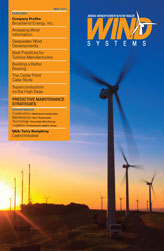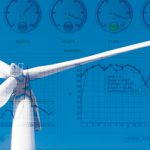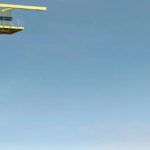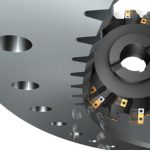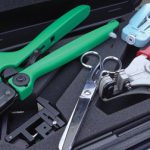Aggressive federal goals to reduce the nation’s dependence on non-renewable energy resources continue to drive expansion of the U.S. wind turbine manufacturing industry. The state of Colorado, for example, is aiming for 30 percent of its energy to come from renewable energy sources including wind power by 2020. Seeing this growth potential, wind turbine manufacturers around the world, including those in Europe and China, have their sights set on expanding operations in the U.S.
But a wind turbine manufacturer’s path for expanding in new markets is not without obstacles. Challenges include establishing and managing an effective supply chain, identifying and complying with relevant standards, improving the safety of workers, and remaining competitive with time-to-market cycles.
Following are six best practices for wind turbine manufacturers looking to expand in the growing U.S. market by delivering cost-effective, safer solutions that are compliant with appropriate standards.
Understand Safety Standards
As wind turbine generator (WTG) manufacturers expand operations globally, they must adhere to local and regional safety standards to help ensure the safety of workers and equipment in those regions. By following appropriate international safety standards, WTG manufacturers can streamline production processes globally, and gain access to customers all over the world. As an added bonus, incorporating safety standards into the wind turbine design process can increase productivity and profitability for both manufacturers and operators of wind turbines. Some of the newest safety standards that are reshaping how designers approach wind turbine safety projects include:
International Organization for Standardization (ISO) 13849-1/2 and International Electrotechnical Commission (IEC) 62061. These international safety standards were recently mandated by the European Commission’s Machinery Directive, and were issued in part to guarantee the free movement of goods and services across a single European market. They also are considered among the most rigorous machine safety standards in the world. Any WTGs shipped into or out of Europe must comply with the appropriate standard after the final withdrawal of EN 954-1 in 2011. The international standards add two very important elements to the definition of the reliability of the machine’s safety function: time and risk. These two elements help machine builders take advantage of a more methodical approach to safety system design.
Both international standards require WTG manufacturers to identify and document the potential hazards associated with machine operation and the risk levels hazards present to users. The safety system is then designed to the level of risk associated with the hazards present on the machine. This allows the designer to design the safety system to the correct functional level. Appropriate documentation proves a machine’s level of safety, designers can better justify a need for a safety system upgrade, and operators can be more confident in the reliability of a machine’s safety system.
Product Directives. Many product directives have been issued in Europe as part of an effort to create a unified European market. Limited to “essential requirements,” which are general in nature and primarily focus on health protection, these directives are compulsory for any product put into circulation and so apply to wind turbines and their sub-assemblies.
GL Guideline for the Certification of Wind Turbines (Edition 2010). The latest edition of this guideline makes specific references to the EN ISO 13849-1: 2006 Functional Safety Standard and requires that WTG manufacturers conduct a risk assessment to determine the maximum permitted probability of failure. By providing numerical evidence of the probability of failure, WTG manufacturers can help justify a customer’s investment in new safety systems.
Underwriters Laboratories, Inc. (UL) Standards. Large and small WTGs are evaluated according to UL Subject 6140-1, UL’s “Outline of Investigation for Wind Turbine Generating Systems.” The systems are evaluated for risk of fire and shock, including safety related control system electrical performance and utility grid-interconnect performance for utility interactive models. While these standards apply in North America, they do not align directly with many of the European IEC standards, making it difficult for European WTG manufacturers to conform to standards when expanding to the U.S.
Tackling the many often-complex standards can be daunting. WTG manufactures should leverage the expertise of certified safety consultants from a global supplier to navigate requirements and design an acceptable safety system.
Start With a Safety Audit
Machine safety is critical for protecting people and the capital investment in a WTG. The diameter of wind turbine blades has become significantly larger in recent years and is now larger than the wingspan of a Boeing 747 jumbo jet, increasing the potential amount of wind energy each WTG is capable of producing. In turn, protecting assets becomes increasingly important for wind turbine manufacturers.
Uncontrollable hazardous weather conditions like high wind speeds create unique safety challenges for wind turbine manufacturers. For example, the turbine must be capable of being brought to a stop quickly and safely in the event of high wind speeds to prevent the turbine from tearing apart. WTG safety system designers are also challenged with a mix of high and low voltages, depending on the section of the WTG (e.g., tower, nacelle, or hub), requiring different considerations based on what is present in a particular area. Within each area, there may be low voltages, high voltages, or a combination of the two. The voltage dictates the safeguarding mechanisms necessary to mitigate risks in each area of the WTG.
For example, personnel must be protected against rotating parts in the nacelle and hub, and WTG designers may need to use physical guarding or special access requirements to stop the WTG from rotating prior to personnel entering the area. Other examples of effective safeguarding include employing a safe-speed monitoring relay to detect over speed of the rotor, vibration monitoring sensors to detect excess vibration, switches to control the opening of control cabinet doors, and/or medium voltage switchgear used in the lower portion of the tower to detect and suppress arc flash hazards.
Performing a safety audit before control system design helps engineers chart the course for an effective safety solution, and evaluate and investigate risks early in the development process. This saves critical time and helps machine builders get their equipment to market faster. In addition, the machine’s end users gain optimized production, thanks to an automation system that helps operate machinery and processes in the most efficient way. A safety audit identifies potential hazards and the required safety control system integrity level, and helps guide the selection of the overall control architecture to achieve the optimum level of safety.
Where hazards cannot be removed through design, machine builders typically will install a fixed physical barrier that helps protect users from the hazard. When frequent access to the hazardous area is required, non-fixed guards are used, such as removable, swinging, or sliding doors. In areas where non-fixed guards are impractical, guarding solutions that monitor the presence of the operator rather than the status of the gate can be used.
Use Integrated Safety Systems
The evolution of safety standards and economic factors are driving the evolution of safety systems from hardwired to contemporary, highly integrated configurations. Using an integrated platform for safety and standard control eliminates the need for electromechanical or hardwired controls. The more designers integrate the standard and safety control functions of a system, the better the opportunity to reduce equipment redundancies, and improve productivity and minimize costs.
This integrated control functionality reduces the number of unique components in use as part of the WTG control system, which in turn reduces inventory costs, as well as maintenance team training requirements. End users also benefit from less waste with fewer parts to maintain and replace throughout the WTG life cycle. In addition, integrated control systems, having broader intelligence regarding machine operation and status, reduce nuisance shutdowns and prolonged restarts, further improving machine efficiency and productivity.
Safety controllers provide this integrated control functionality and offer significant benefits in multistep shutdown or ramp-down sequences because they provide the necessary logic through software rather than the hard-wired logic of relays. An integrated safety controller is an ideal solution for any application requiring advanced functionality, such as zone control. Being able to safely monitor and control access to what is active on each level of the WTG is critical due to the size and height of the decks within a WTG tower design. With properly designed safety controls and guarding, designers reduce access time, helping make machines safer and more efficient.
Along with eliminating the need for a separate safety controller, integrated safety systems also use a single programming software package. This can eliminate the need to write and coordinate multiple programs on different controllers, which in turn can simplify application programming, and help reduce training and support costs.
Safe-speed control solutions provide a great example of effective control integration. With safe-speed control, safety input devices, such as guard-locking switches and emergency stop pushbuttons, connect directly to the speed-monitoring core of the control solution. This eliminates the need for a separate, dedicated safety controller. Extending use across multiple platforms, safe-speed control solutions help reduce overall system cost and improve flexibility because they allow operators to perform maintenance and other tasks while a machine is in motion. Safe-speed control also helps increase uptime and decrease energy costs because a machine need not be completely shut down and then restarted.
Networking offers another way to integrate safety and standard controls. The introduction of networks to industrial environments helps increase productivity, reduce wiring and installation, improve diagnostics and ease access to facility data. Using an existing network to include safety information extends those same benefits, allowing seamless communication of the complete automation process on one standard network with one set of hardware and wiring. Diagnostics from smart devices that are networked together also can simplify designs and reduce integration costs.
Ensure Compliance with Future Grid Codes
WTG manufacturers need to keep in mind the emergence of new grid codes around the world, as these codes have important implications for the network connection requirements of wind farms to the grid. Recently, utilities have expressed interest in a harmonized grid code compliance standard that would specify the response time for wind farms that support the electrical grid during faults in the system. One suggested standard would require wind farms to supply reactive power within 20 milliseconds of fault detection, a reaction time many struggle to deliver today due to legacy, and often proprietary, communication protocols that make it difficult to coordinate a complete wind farm. Some farms utilize more than one WTG manufacturer, and each one may utilize a unique communication protocol it has developed internally, making it difficult for a wind farm to standardize on one protocol throughout the farm.
Wind farm management systems designed with EtherNet/IP network connectivity are capable of meeting or exceeding this proposed reaction time. EtherNet/IP, the world’s leading industrial network, is an open standard that uses Ethernet TCP/IP technology. EtherNet/IP manages standard and safety control on a single network and allows convergence of the WTG with the business enterprise, providing access to diagnostic data and allowing more accurate and informed decisions. This connectivity also allows for deterministic data exchange at fast intervals and reduces the infrastructure required to support system management activities.
Using a wind farm management system with the EtherNet/IP network connectivity provides wind farm management companies with remote-monitoring capabilities. The ability to remotely monitor and control equipment from a distant location helps reduce fuel usage and related emissions. It also reduces associated travel time and costs of sending maintenance personnel to the WTG location.
Partner with a Global Supplier
WTG manufacturers expanding operations in a new market may encounter several supply chain challenges, including how to manage costs, inventory and vendor relationships. Working with a single global supplier, manufacturers benefit from one local point of contact for all supply chain considerations, freeing up internal resources to focus on its core competency and lowering the total cost to design, develop and deliver new turbines.
A global supplier with broad industry experience also can help the manufacturer implement a successful production management system based on industry best practices. As a result, WTG manufacturers can better respond to spikes in customer demand, increase productivity, and lower their time to market. One global supplier also eliminates the need to contact multiple vendors for support and troubleshooting issues, and is also a resource for regional standards compliance.
Leverage Panel Building Services
Engineering the control panel is easily one of the most time-consuming and cost-intensive aspects of the WTG design and development process. Knowing this, many WTG manufacturers work with third-party panel builders to streamline the process. However, the actual design and documentation are usually the responsibility of the WTG manufacturer. And, as business grows in new markets, working with multiple panel builders can become quite arduous, often resulting in the need for increased engineering staff resources.
Rather than working with multiple panel builders, manufacturers can work with a global automation supplier that provides panel-building services to develop complete power and control panels for all new projects, regardless of location. This single point of contact through design, prototyping and ongoing deliveries can help a WTG manufacturer increase production capacity without increasing its internal workforce, freeing up existing resources that would be needed for engineering, procurement, inventory management, testing, standards compliance and troubleshooting support.
A single global supplier with experience assisting WTG manufacturers in globalization efforts can also help adapt to regional electrical standards for panel building. WTG manufacturers need to ensure panels are compliant with UL standards in the U.S. and CE standards in Europe and other countries.
Working with a single global supplier, the WTG manufacturer can also standardize component selection and panel design across all locations worldwide, simplifying spare part inventory, training and staffing practices. Reducing the number of control platforms also helps serve end customers; since the manufacturer’s staff is trained on one platform, there is always a knowledgeable technician available for customer support.
Thanks to advancements in technology and globalization of safety standards, WTG manufacturers can expand to new markets and help customers improve worker safety and protect equipment and assets. By enlisting the help of global suppliers, WTG manufacturers can ensure a smooth expansion to new markets and continue growing as the wind energy industry expands.



















